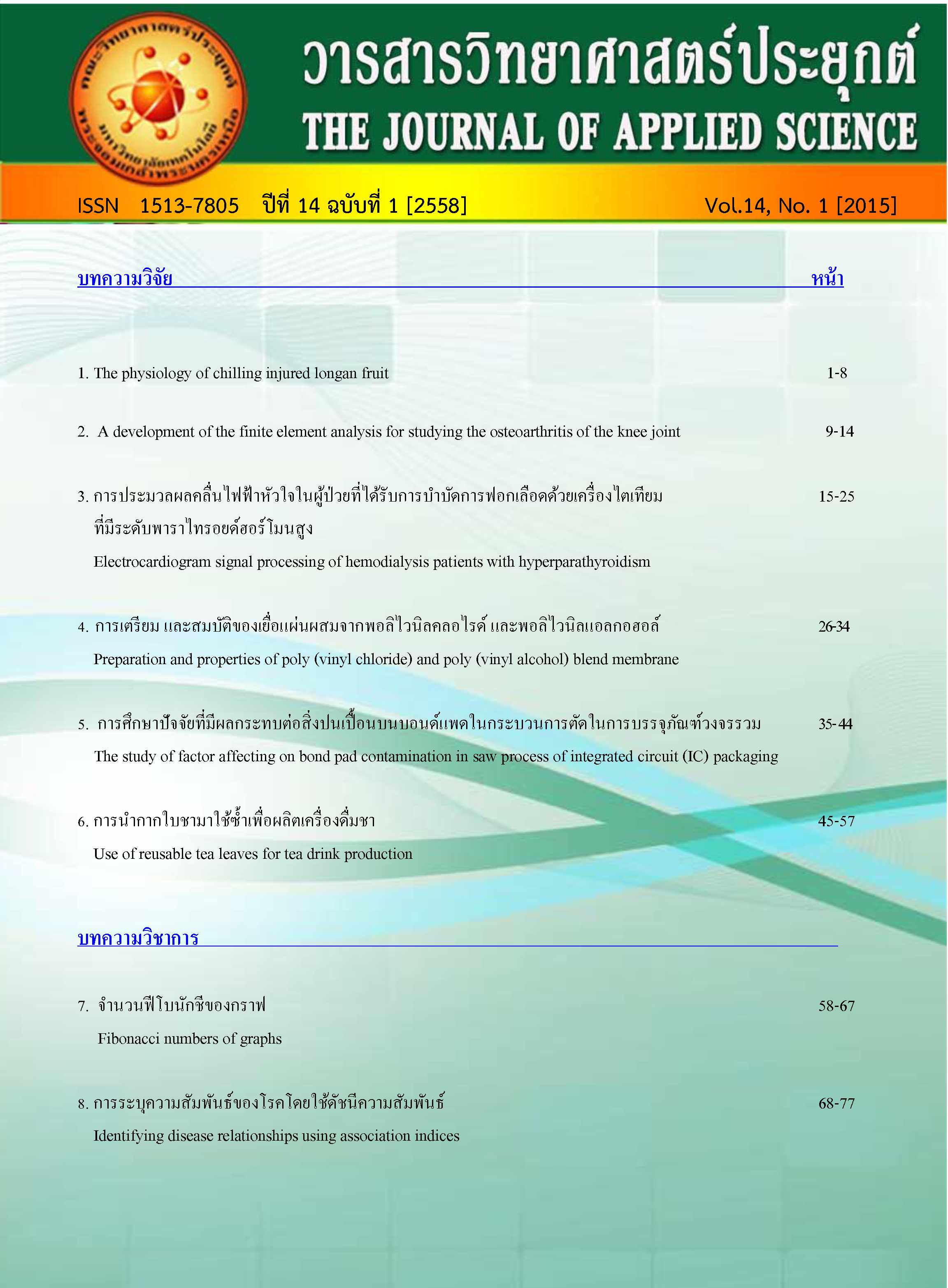The physiology of chilling injured longan fruit
Keywords:
discoloration, polyphenol oxidase, electrolyte leakage, longanAbstract
It is known very well that longan fruit was easily deteriorated during storage at low temperature. Longan pulp, translucent aril, generally contains high amount of sugars while the longan peel, yellowish-brown pericarp, consists of high phenolic substances. In this study, longan fruits were kept at low temperature (4ºC) to investigate the changes of pulp and peel properties. It was found that longan peel was obviously malformation as a result of the increasing in an electrolyte leakage value, hardness and discoloration. The dry peel then reabsorbed water that caused swelling and disintegrating. The pulp color altered from translucent white to light yellow since the polyphenol oxidase activity dramatically increased. The pulp also contained more juice after longer storage. However, it is still difficult to identify the symptoms of chilling injury on longan pulp. One possibly involved factor is the electrolyte leakage value as it increased during storage.


